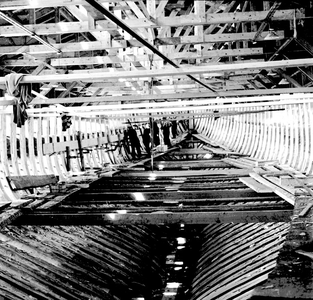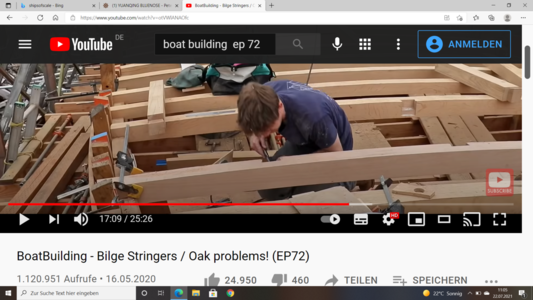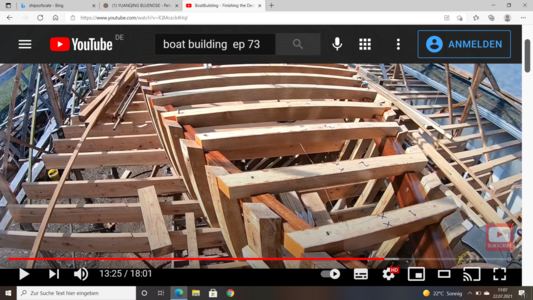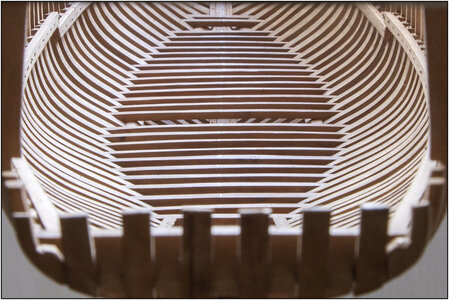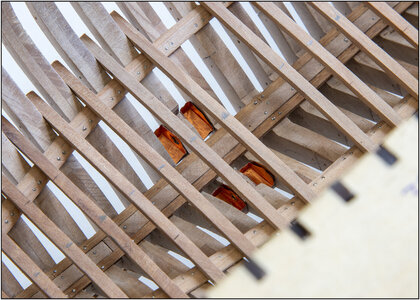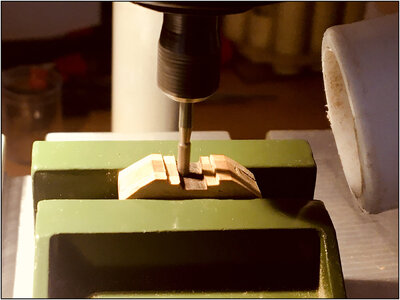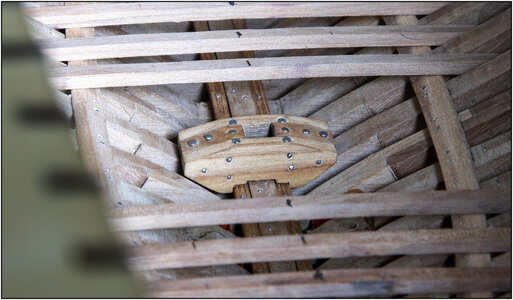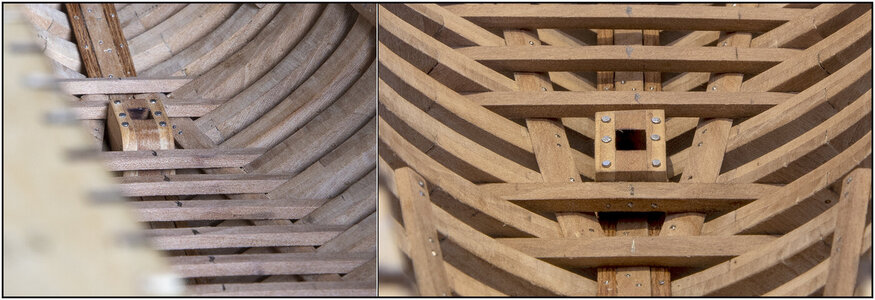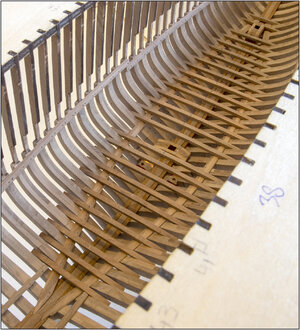The next step in the hull is the inner wall planking on the port side, starting on the lowest part between the keelson and the bearing beams of the lower floors. That is no part of the kit, but it is my choise.
But I still have not received the ordered wood.

So, started with the preparation of the lower floor beams and mast steps. The YQ-way, as wrote above in post #496.
Sanded all the char from the 27 beams and aligned them on the bearing beams. I had to flatten a little bit of the starboard side bearing beam:
View attachment 246092
It needs a little more on the starboard side, thanks to the picture.

I have marked all the beam in the middle, so I could align them on the keelsom to check the fitting.
When the lower planking is done, the beams where attached to the bearing beams, inclusive the bolts. And sanding off the marks.
Then I installed the 4 copper water wells, I introduced them to you in my posts #233 and #242:
View attachment 246093
Around them and between the lowest point between the frames comes the cast iron parts for the ballast. But that will be dumped later.
I could use my cross-table and mill for the first time, to mill the bottom of the main mast step. To fit over the keelson and sisters keelson:
View attachment 246094
And the fitting:
View attachment 246095
From the side, the parts are reinforced with the same bolts as in the keelson and bearing beams. From the top, the step is secured to the frame and to the sisters keelson with stronger bolts.
And the mast step for the fore mast:
View attachment 246096
The mast step is also secured to the floor beam that lies in front.
Now you can see what different types of light affect the color of the wood.
And a overview:
View attachment 246097
Until the wood is in, I'll continue with the pre-work on the other lower floor beams.
Regards, Peter





